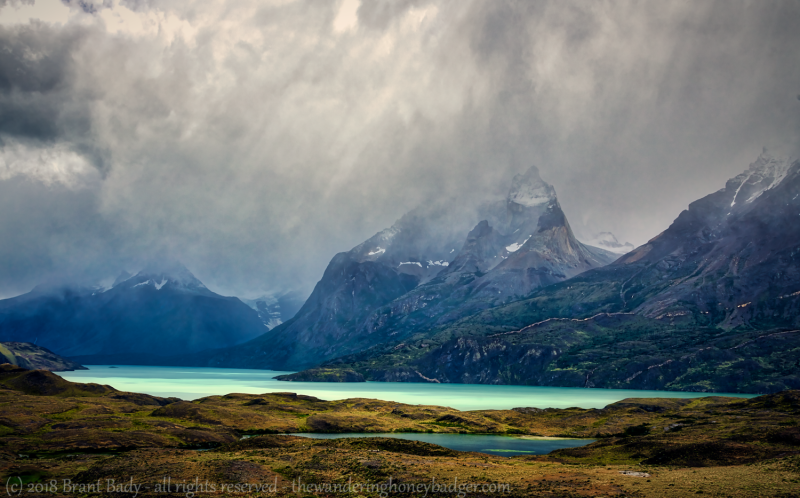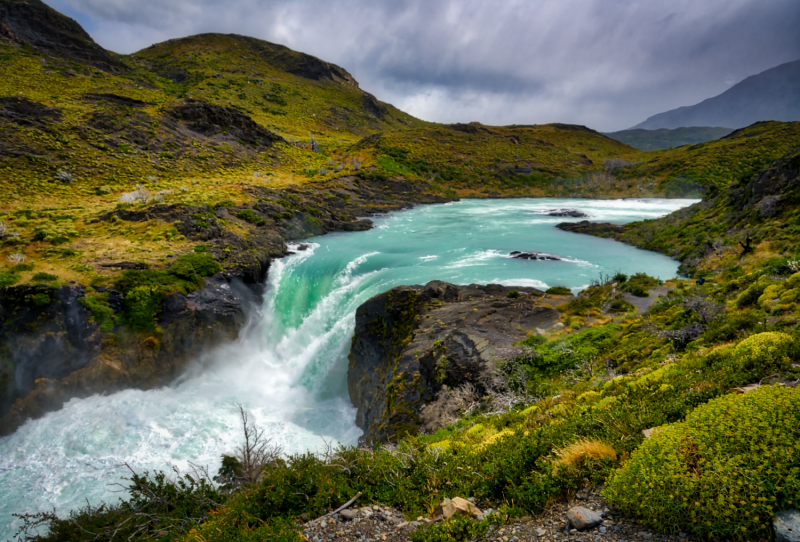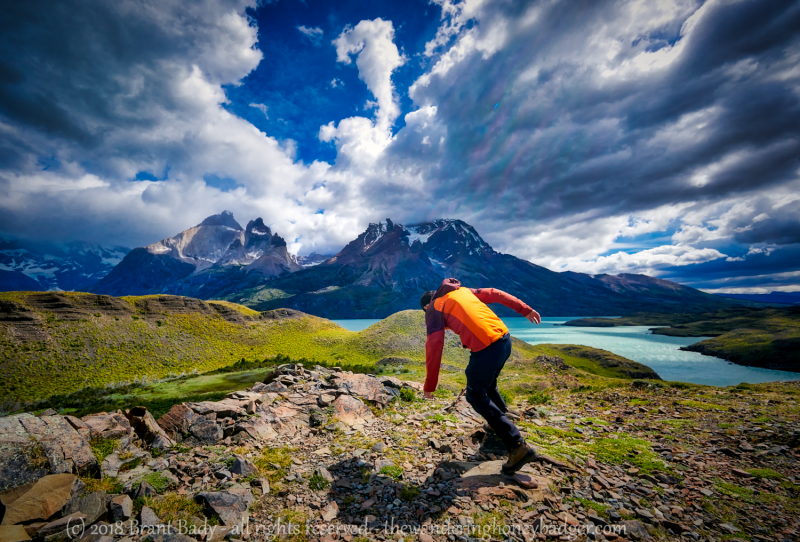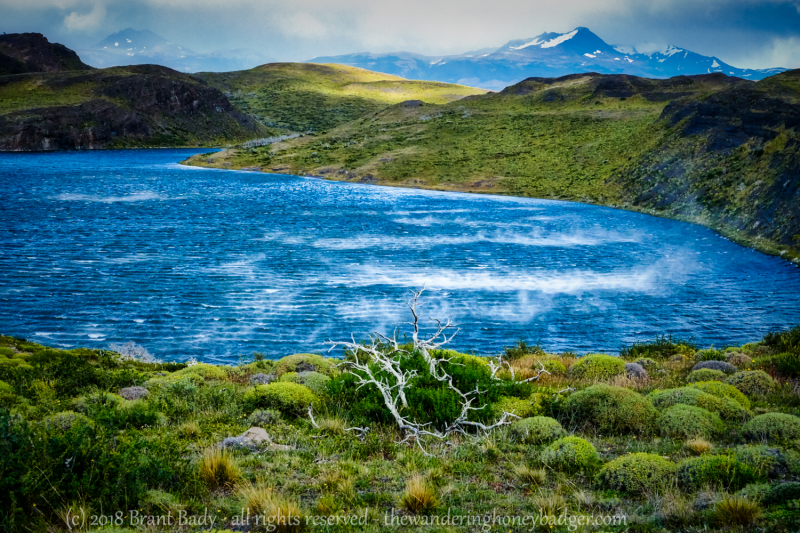
If you want to understand my thoughts (and trepidations) about Patagonia before I got there, read my pre-trip post A Palanquin for Patagonia? – The Honeybadger’s Upcoming Trip to South America and Beyond..
Logistics
My arrival in Patagonia was preceded by a 17 day cruise to Antarctica, South Georgia, and the Falklands, so I was quite pampered at that point about not having to pack & travel every two or three days, as I normally do when traveling on dry land. With the cruise, I unpacked once and the ship moved me around the route. Now that my feet had hit Patagonia, it was time to be a landlubber again, exploring parts on my own arrangements… and packing/unpacking a few times a week as I hit the places that interested me.
This trip however was even more challenging in terms of packing/upacking, because I needed to bring clothes for both a tropical (Cuba) and an arctic (Antarctica) climate, and had to fit them all into the 21″ roller I use for my personal stuff (which also includes any gear overflows like a tripod or underwater camera housing). This is in addition to a whole backpack of camera gear that is normally on my back, at my side or overhead, always locked in stainless mesh with alarms when in my room, and occasionally even locked & wired to me.
And yet, Antarctica had me fooled about its weather, I had layers of additional or heavier clothes that I never got close to using. I admit it was incredibly great weather for almost all of my time there, but that is another tale soon to be told, this post is about Patagonia… and I had more trouble with weather and conditions there in Patagonia than I did in Antarctica, and the primary issue was the wind!
The Winds of Patagonia
As a long time sailor, I love the wind when I can control it. I spent decades racing and cruising the Pacific Northwest of North America. I learned a lot about wind, it cause and conditions, and how to manage and often benefit from it, and occasionally how it can hammer the crap out of you.
Visiting Patagonia, one should have no misconception that wind will be to your assistance, in fact it will be your nemesis in almost every case. Even as a photographer, it’s a 50/50 shot as to whether the wind is going to screw your up shot, or enable it? Frequently the wind was blowing so hard it was nearly impossible to stay on my feet, let alone allowing me to hold a camera steady and not being covered with spray. However I also spent a fair bit of time waiting for clouds and weather to drift into just the right arrangement and lighting.. luckily it blows like heck all the time in Patagonia, so things change fast…
While I was planning my time in Patagonia, I came across a reference or two to “the white wind” which apparently made it very difficult for hikers. In truth, wind is one of the major causes of injury (and sometimes death) in Patagonia – tourists/hikers getting literally blown off the rocks. Indeed, once having experienced the winds, that warning is viewed now as a wise and prudent one.
Mirador Salto Grande was the first place I was blown away, it was a short walk up to the waterfall, but it was like being in the middle of a jet engine due to the local topography creating a wind-tunnel like effect here. Hard to hold a camera facing the falls, besides the wind shaking the heck out of you, the lens was coated in spray within seconds…

The second place wind was intense was a hike out across sandbar across Lago Grey in order to get a glimpse of the Lago Glacier.. (not worth the effort photographically, and very windy).
In contrast, here is a great area for photographs at Torres del Paine –
It is accessible from the road with just short hike up the hill, and other photogenic spots in the immediate vicinity. My intrepid guide and photo-sherpa Matias, was quick to tell me that a National Geographic photographer had camped out here (under special permit) for two years while trying to photograph Puma (Mountain Lion / Cougar). While I utilized the wind here to capture the best moments I could in terms of weather and lighting, this was also the place I experienced the most windy conditions..
Matias trying to walk forward against the wind at a hilltop with Torres del Paine in the background

Matias could literally lean into the wind at a 45 degree angle and effectively “wind surf” while it held him from falling forward.
Again nearby on the opposite side of the road just a bit further down the road, there is a section that overlooks a small group of connected lakes.. It was here that I figured out what the “white” part of name “white wind” came from in the hiking community, and not the locals because my intrepid guide and photo-sherpa Matias had never heard of the term the “white” wind…
In this case it was accelerating so fast through the channels that it was literally blowing the tops off the small waves on the lake turning it into a froth of white foam.

It was very very difficult to hold the camera steady, and it was critical to time the shot before the gust hit me. While this is the best shot I could get at the time, and I spent a fair bit of time being buffeted around as the gust hit me, mixed with being hit with water spray while at the top of the hill. The reality was much worse than this photo shows.
In any event, the location on the embedded map was one of the most productive places I found for photography at Torres del Paine, and it was fairly accessible from the road.
My conclusion was that hiking and photography here are generally mutually exclusive at Torres del Paine. If you are hiking overnight you won’t have much capacity to carry camera gear, maybe a pocket camera, and the “normal” hiking routes, like the famed “W” which take days, will put you in the bottom of valleys where the viewpoint is more likely to be more restricted and less photogenic. Whereas a photography focused plan means carrying a variety of gear and lenses, and is best done via day trips to selected viewpoints.
Along with good hiking shoes or boots with gripping soles, warm and WIND PROOF clothes are essential for any visit to Torres del Paine.
